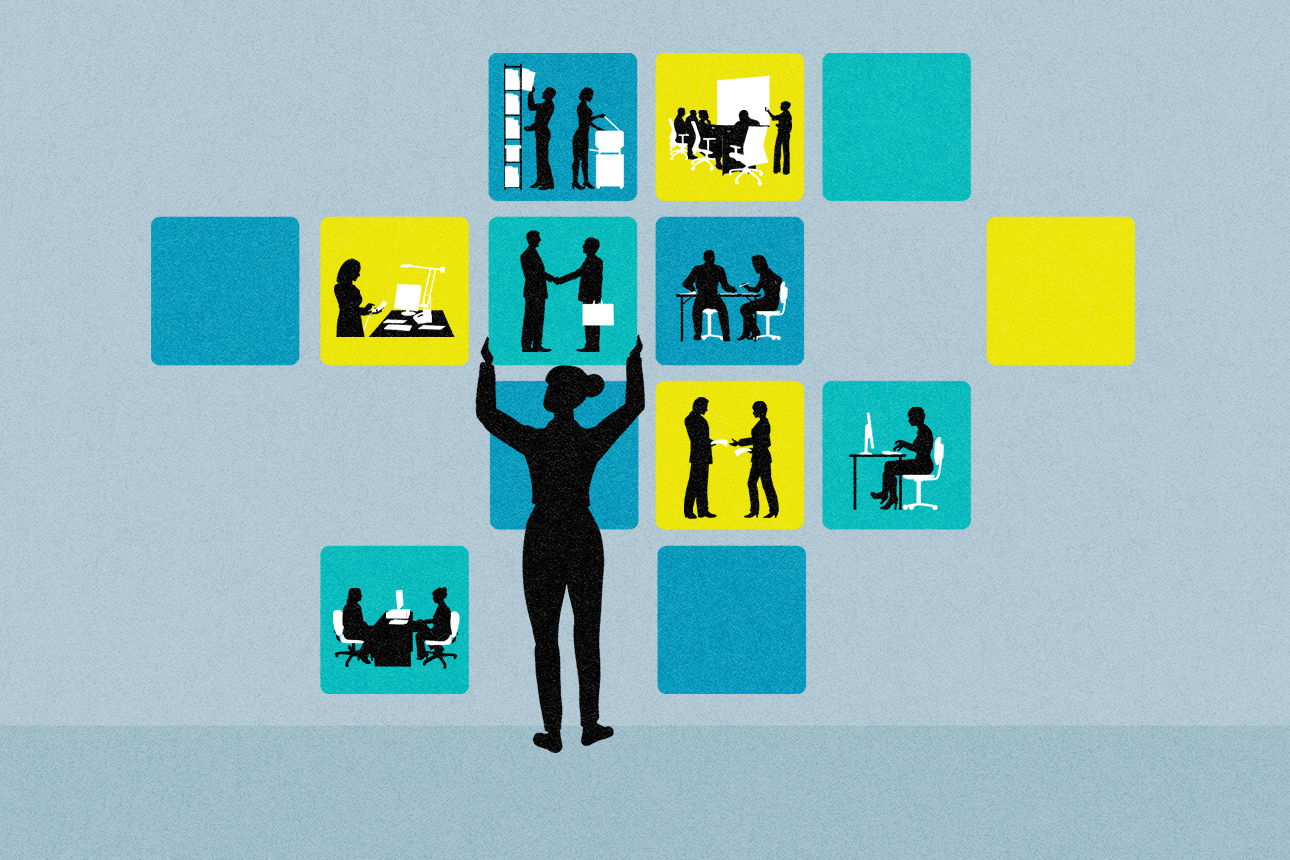How ChatGPT Can and Can’t Help Managers Design Better Job Roles
Many leaders don’t know how to design healthy, productive roles. ChatGPT proves effective here, when used wisely.

Carolyn Geason-Beissel/MIT SMR | Getty Images
Today’s leaders are pushing to increase employee engagement and decrease turnover but face a harsh reality: widespread employee burnout. To fight it, managers need to offer employees more healthy and meaningful work. In surveys conducted in the United States by Gallup in 2022, 40% of employees reported that their job had a negative impact on their mental health, and around 30% said they frequently experience burnout. Moreover, U.S. employee engagement hit a seven-year low, with only 32% of workers polled by Gallup saying they were engaged and 17% saying they were actively disengaged in 2022.1 Globally, employees’ lack of engagement has been estimated to cost employers $7.8 trillion — equivalent to 11% of the global gross domestic product.2
The root causes of disengagement and work stress often lie in how an organization has designed people’s jobs. Decades of extensive research consistently link poor work design with negative employee outcomes, including mental strain, high turnover, job dissatisfaction, decreased productivity, and impaired learning.3 Many companies are now striving to do better.
Get Updates on Innovative Strategy
The latest insights on strategy and execution in the workplace, delivered to your inbox once a month.
Please enter a valid email address
Thank you for signing up
Unfortunately, our research indicates that many managers lack the necessary understanding to design high-quality jobs. This is where artificial intelligence technologies such as ChatGPT could play a key role, by bridging the manager knowledge gap and helping design high-quality work that benefits both employees and organizations. However, it is important for managers to first understand the pros and cons of using ChatGPT for work design. Let’s explore some takeaways for managers that our research has revealed.
Managerial Challenges: Mundane and Unfulfilling Jobs
What factors determine whether a job is high quality? The SMART work design model, a framework created by Sharon K. Parker, defines high-quality work as work that is stimulating (jobs with task variety and a chance to develop new skills), incorporates mastery (such as role clarity and job feedback), is agentic (such as job autonomy and change participation), is relational (where social support and positive teamwork are available), and is tolerable (with manageable work hours and reasonable levels of time pressure).4
Despite the benefits of well-designed jobs, poorly designed ones are still prevalent. According to the Gallup 2019 Great Jobs Survey, only 40% of employed Americans are engaged in jobs that possess SMART characteristics.
References
1. B. Wigert and R. Pendell, “6 Trends Leaders Need to Navigate This Year,” Jan. 31, 2023, Gallup, www.gallup.com.
2. Ibid.
3. S.K. Parker, “Beyond Motivation: Job and Work Design for Development, Health, Ambidexterity, and More,” Annual Review of Psychology 65 (January 2014): 661-691.
4. S.K. Parker, “Smart Work Design,” Safeguard, May/June 2022, 50-53.
5. J. Rothwell and S. Crabtree, “Not Just a Job: New Evidence on the Quality of Work in the United States,” PDF file (Washington, D.C.: Gallup, 2019), www.gallup.com.
6. Ibid.
7. S.K. Parker, D.M. Andrei, and A. Van den Broeck, “Poor Work Design Begets Poor Work Design: Capacity and Willingness Antecedents of Individual Work Design Behavior,” Journal of Applied Psychology 104, no. 7 (July 2019): 907-928.
